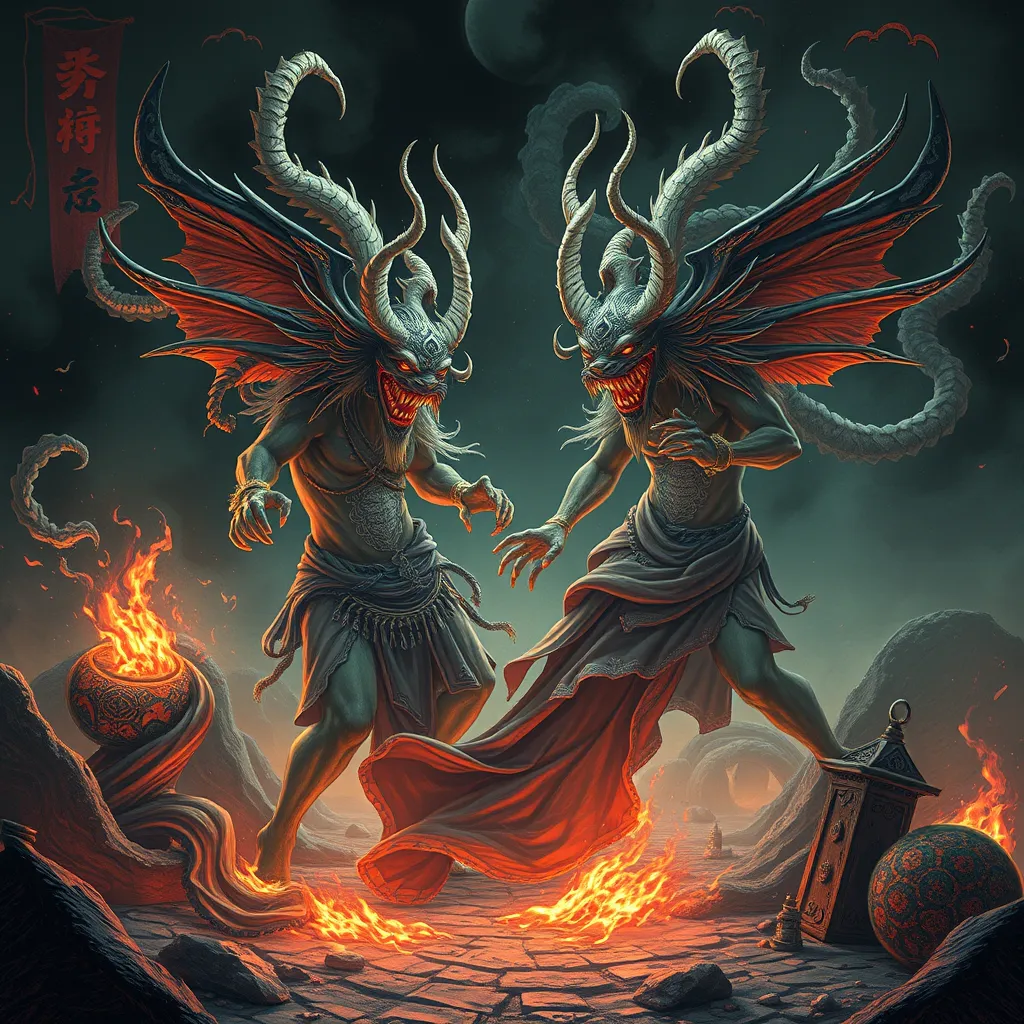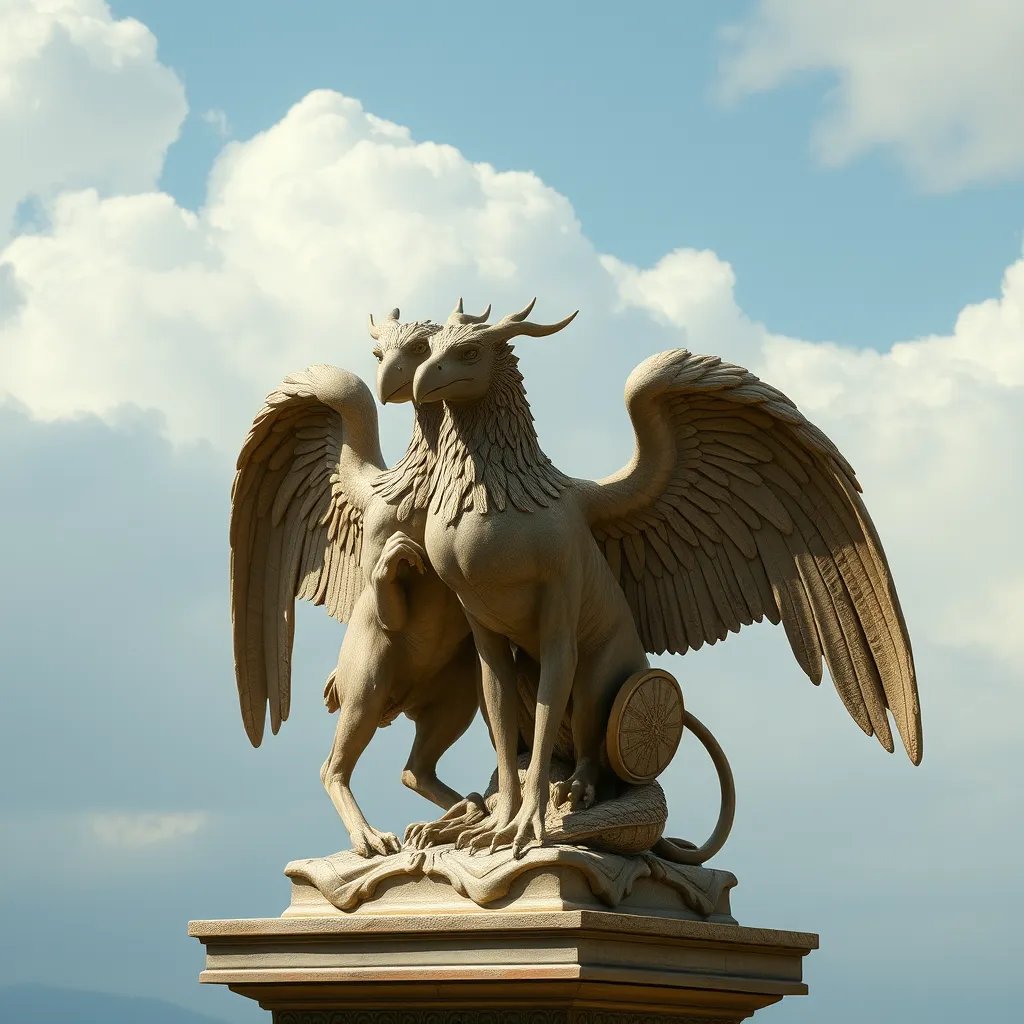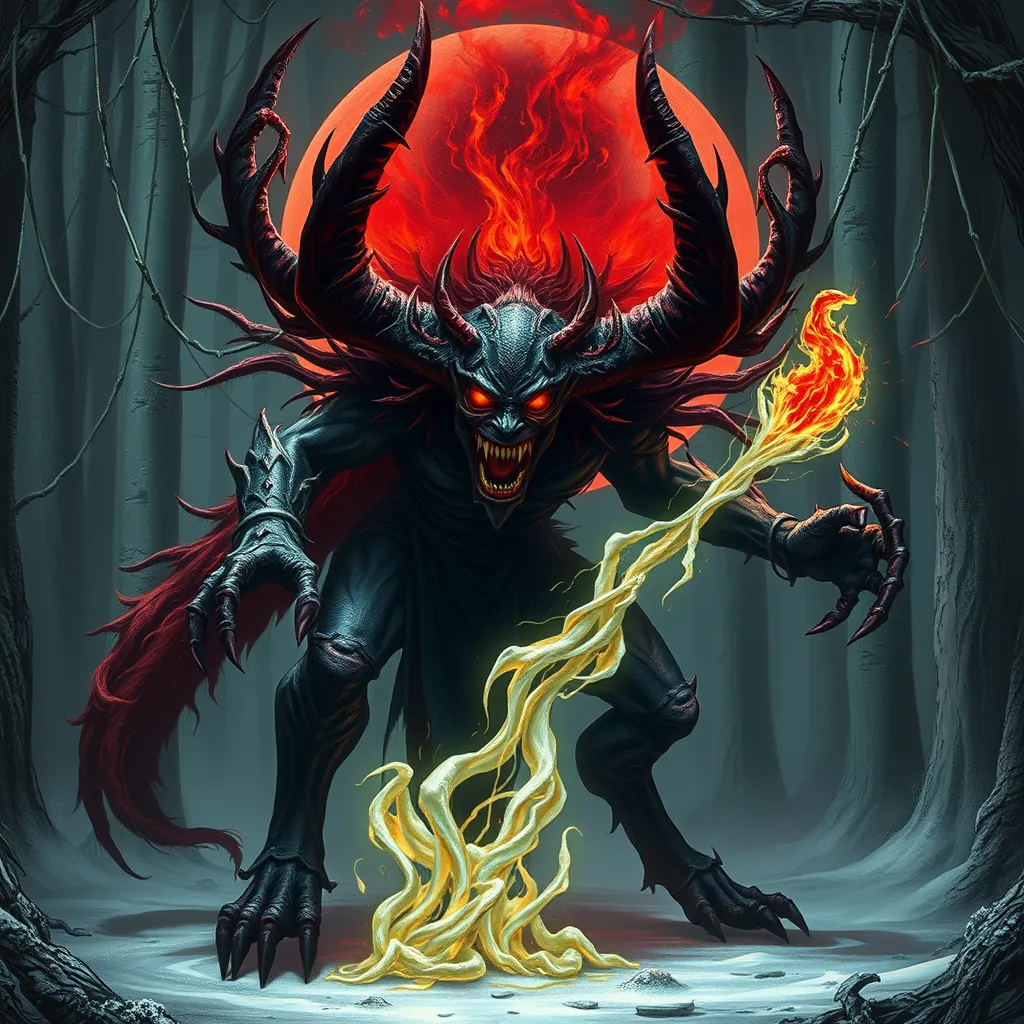The Rakshasa in Korean Folklore: The Ghosts and Demons of the Peninsula
I. Introduction
The Rakshasa, a figure rooted in the mythologies of South Asia, has transcended cultural boundaries to find a place in various folklore traditions, including that of Korea. These demonic beings are often depicted as malevolent spirits with the ability to shape-shift and influence the living world in disturbing ways.
In Korean culture, the significance of Rakshasa is profound, reflecting a blend of ancient belief systems and local interpretations. This article aims to explore the multifaceted roles of Rakshasa in Korean folklore, their characteristics, historical context, and their presence in contemporary culture.
II. Historical Context of Rakshasa in Korea
A. Origins of the Rakshasa myth in Asian religions
The origins of Rakshasa can be traced back to ancient Hindu texts, where they are described as demonic beings who oppose the gods and disrupt the natural order. These spirits are often portrayed as shapeshifters and tricksters, embodying chaos and malevolence.
B. Introduction of Rakshasa into Korean folklore
As Buddhism and other cultural influences spread into Korea, the concept of Rakshasa was adapted and integrated into local beliefs. The introduction of these spirits coincided with the incorporation of various elements from Chinese and Japanese folklore, further enriching the mythos surrounding them.
C. Historical texts and references to Rakshasa
Historical texts, such as the Samguk Yusa (Memorabilia of the Three Kingdoms), contain references to Rakshasa-like beings, illustrating their role in ancient Korean narratives. Such texts serve as a bridge between the past and present, showcasing how these figures have evolved over centuries.
III. Characteristics of the Rakshasa
A. Physical descriptions and variations
Rakshasa are often depicted with grotesque features, including:
- Sharp claws and fangs
- Multiple limbs or heads
- Dark, menacing skin tones
Despite these common traits, interpretations of their appearance can vary greatly across different regions and stories within Korea.
B. Behavioral traits and supernatural abilities
Rakshasa possess a range of supernatural abilities, which may include:
- Shapeshifting into animals or humans
- Invisibility and deception
- Control over natural elements, such as wind and fire
These traits contribute to their fearsome reputation as malevolent beings who can disrupt the lives of ordinary people.
C. Differences between Rakshasa and other Korean spirits
Unlike other spirits in Korean folklore, such as Gwisin (ghosts) or Dokkebi (goblins), Rakshasa are particularly associated with aggression and chaos. They are often seen as antagonists in folklore, whereas Gwisin are more related to the realm of the dead and Dokkebi to mischief and trickery.
IV. Rakshasa in Korean Literature and Art
A. Depictions in traditional Korean literature
Rakshasa have appeared in various forms of traditional Korean literature, often serving as antagonists in folklore tales. Their stories typically involve conflict with heroes or deities, emphasizing themes of morality and the struggle between good and evil.
B. Representation in visual arts and crafts
In visual arts, Rakshasa are represented in paintings, pottery, and carvings. These depictions often highlight their grotesque features and serve as cautionary symbols to ward off evil influences.
C. Influence on modern storytelling and media
Contemporary literature and media, including novels and television dramas, continue to draw on the Rakshasa myth. They are often reimagined in ways that resonate with modern audiences, blending traditional traits with new narratives.
V. Folk Beliefs and Rituals Associated with Rakshasa
A. Regional differences in beliefs about Rakshasa
Beliefs about Rakshasa can vary significantly across different regions of Korea. In some areas, they are seen as protectors, while in others, they are viewed purely as malevolent entities.
B. Traditional rituals and practices to appease or ward off Rakshasa
Various rituals have been practiced to ward off the influence of Rakshasa, including:
- Burning incense and offering food
- Performing exorcisms led by shamans
- Creating talismans inscribed with protective verses
C. Role of shamans and spiritual leaders in dealing with Rakshasa
Shamans play a crucial role in addressing the challenges posed by Rakshasa. They conduct rituals to cleanse spaces and individuals of negative influences, ensuring peace and protection for their communities.
VI. Comparisons with Other Demons and Ghosts in Korean Folklore
A. Similarities and differences with other spirits (e.g., Gwisin, Dokkebi)
While Rakshasa share some characteristics with other Korean spirits, their motivations and behaviors often set them apart. Gwisin are generally more passive, while Dokkebi are known for their playful nature.
B. Cultural significance of various demonic figures
Each demonic figure holds cultural significance, representing different aspects of human fears and societal norms. Rakshasa embody chaos, while Gwisin reflect the complexities of life and death.
C. Thematic connections in folklore narratives
Folklore narratives often explore themes of conflict between good and evil, where Rakshasa serve as embodiments of the darker aspects of existence. This thematic connection echoes across various cultures, with Rakshasa representing the struggle against malevolence.
VII. Modern Interpretations and Popular Culture
A. Rakshasa in contemporary Korean films and television
In modern Korean cinema and television, Rakshasa are frequently depicted as complex characters with both villainous and sympathetic traits. This nuanced portrayal allows for deeper storytelling and engagement with audiences.
B. Influence on literature and graphic novels
Rakshasa have also influenced contemporary literature and graphic novels, where they are often reinterpreted to fit modern themes, such as identity and societal conflict.
C. Global reception and adaptation of Rakshasa themes
The themes surrounding Rakshasa have found resonance beyond Korea, influencing global folklore studies and adaptations in various media, highlighting the universal nature of their stories.
VIII. Conclusion
A. Summary of key points
This exploration of Rakshasa in Korean folklore reveals their rich historical context, unique characteristics, and enduring presence in literature and culture. From ancient texts to modern interpretations, Rakshasa continue to captivate and inspire.
B. The enduring legacy of Rakshasa in Korean culture
The legacy of Rakshasa in Korean culture demonstrates the dynamic interplay between myth and society, reflecting the evolving nature of folklore over time.
C. Future directions for research and exploration in folklore studies
Future research may delve deeper into the regional variations of Rakshasa beliefs and their impact on contemporary Korean identity, ensuring that this fascinating aspect of folklore remains a relevant area of study.



